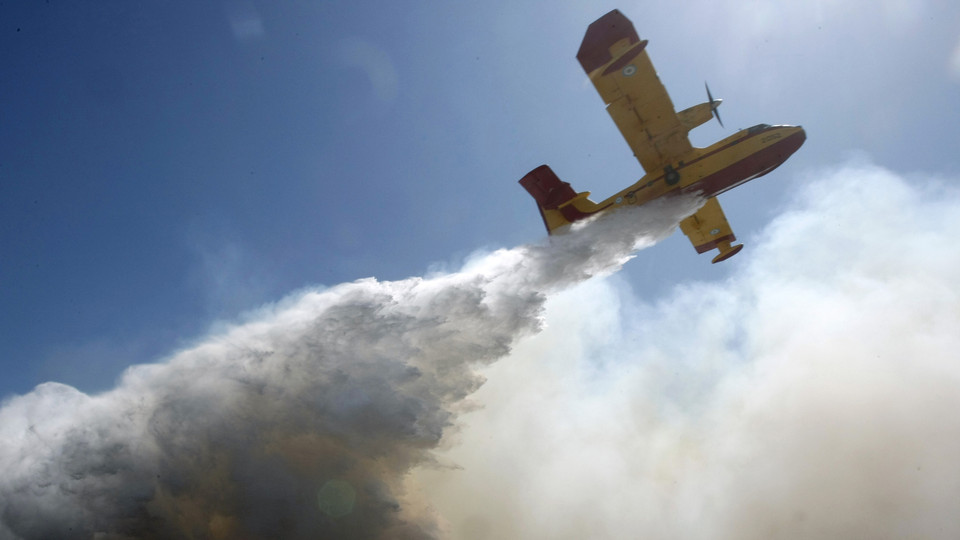the fire that started on Saturday in Baiona, in the south of the municipality of Odemira, maintains two active fronts and has already almost affected 9 hectares, revealed the Regional Emergency and Civil Protection Command of the Algarve, in the situation report made at 19:30.
The «most critical points» are located on the «northern front», in the towns of Delfeiras, Maroucos and Taliscas, in the parish of São Teotónio.
This front evolves in an area «without capacity» for combat with land means and «difficult progression, with a terrain unfavorable to the operation of machines», adds the communiqué, signed by the regional commander Vítor Vaz Pinto.
The areas north of the fire», are «in the process of stabilization, but still with potential for perimeter expansion».
On the southern front, there are “two aspects of greater concern”. One is located in the municipality of Aljezur, «with a critical line from Galé de Baixo to Barracão de Baixo».
On the line facing the Monchique mountains, near the town of Reguengo, there are «multiple critical points with access to sensitive areas with a capacity for rapid progression, without the feasibility of suppression or access by land means».
In other words, these are areas where it is difficult to get the means to reach and where there is still a lot to burn, not least because this area of possible expansion towards the south «has not burned since 2003».
The situation of the regional commander adds that, throughout the day, there were "multiple reactivations", which took on such dimensions that it took "a muscular response from the device on the ground".
«All these critical points are accompanied by means, however they do not allow progression and combat on the ground with land means, which limits their resolution, he explains.
The problem is that the areas where the fire is still active have a «steep slope with embedded valleys», with «constant reactivations». All of this means that the «start-ups» are «quickly out of suppression capacity», a situation aggravated by the lack of conditions for the crawler machines to act in the consolidation.
For this next night, as soon as the temperature drops, the relative humidity increases and the wind becomes weaker, the strategy aims to "sustain the stabilization of the fire and reinforce the perimeter consolidation process", adds the Regional Command.
Since the start of the fire, on Saturday, 36 people have been assisted by the National Institute of Medical Emergencies (INEM), mostly civil protection agents, eight of whom were transported to the hospital unit (five firefighters and three popular).
So far, 1.459 people have been displaced by the GNR, with the support of the Portuguese Red Cross (CVP) and firefighters, as a precaution, of which 148 were taken into concentration and support zones for the population, established by the municipal civil protection services, in articulation with social security and social action services in the affected municipalities.
At the moment, there are still 79 people in the Zones of Concentration and Support for the Population (ZCAP), distributed as follows:

The following routes are cut off: EM 501, CM 1186, Estrada do Passil/Marmelete and EM 1002.
As a preventive measure, 124 animals of different species were removed from threatened areas, monitored by the municipal councils' veterinary services.
At 19:30 pm, there were 1025 on the ground fighting the fire, supported by 286 vehicles and 15 air assets, including two light helicopters, a Kamov heavy helicopter, eight Fireboss medium amphibious aircraft, two Canadair heavy amphibious aircraft, a reconnaissance and assessment aircraft and a coordinating helicopter. There are also 17 track machines on the ground.
Among the different entities that contribute to the resolution of this exceptional occurrence, the firefighters with the greatest number of means and resources stand out, along with the GNR (territorial and UEPS), ICNF, Sapadores Florestais, Afocelca, Armed Forces, INEM, CVP, SMPC of Odemira, Aljezur and Monchique, SIRESP, E-Redes, Altice, and ANEPC's own means (operational structure, technical-operational support and the special civil protection force).
Starting tonight, weather conditions are expected to improve. Thus, the wind should change to the East, the temperature will decrease, with a minimum of 22°C during the night and a maximum of 30°C, while the humidity of the air will increase during the night and early morning, reaching 97%.



















Comments